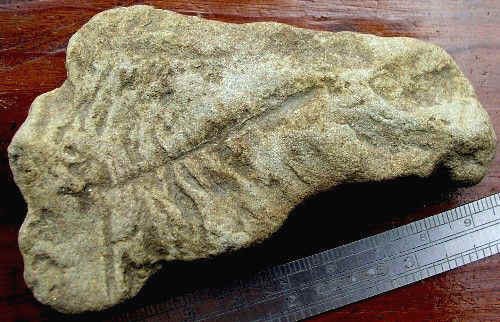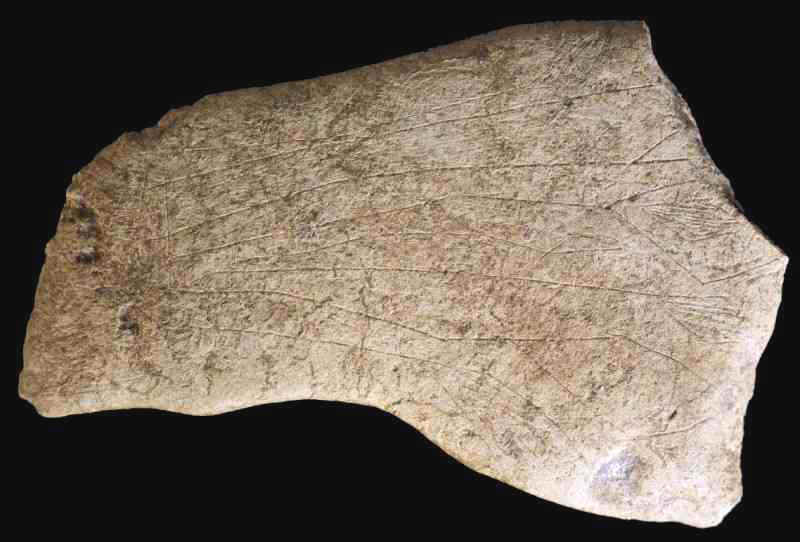|
The Gault Site
in Texas
| The significance of the Gault site
lies to a great extent in its
convincing evidence, contrary to conventional wisdom, that large populations of the "Clovis" time frame
already inhabited sites of
considerable geographical extent and duration, suggesting the possibility of a "pre-Clovis" presence.
In the context of the large quantity and extent of artifact material at
33GU218 and other North
American sites, it is interesting to note the similarity in
morphology of much of Gault's artifact material to that of artifacts at this site, notably in its
resemblance to the rounded or flattened (quasi-anthropomorphic) bird face images - mouth, eye, and general form of the figure being the salient features.
Geometrically incised limestones are a also a distinctive feature of both sites.
The photo below shows the Gault
limestone artifact widely known as the "Wheatstone"
(possibly Clovis age, more likely early Archaic), the
incised marks being interpreted as wheat stalks, on the rather
questionable assumption that the image was intended to be viewed vertically.
In addition to its bird-like shape, this figure exhibits the face characteristic of
thousands of images at 33GU218 and other sites. Note the mouth, the
eye, and the crest over the forehead.
Given the overall morphology, it seems more plausible that
the incisions along the side represent feathers. (Perhaps
the Gault investigators will someday also "discover"
this.)
Shown below, beneath the Gault bird, are
three
photos of similar figures (very common) at 33GU218.
Although without the finely incised ornamentation, they are
clearly of the same morphology and carved with a similar face.
|
| Below: Both sides of a
limestone bird from Day's Knob, this one with a more
naturalistic face, but otherwise with essentially the same geometry as that
of the Gault bird. Note the reflectional (or at least
thematic) symmetry, a well recognized hallmark of human agency. |
|

|
| Below: Left, a sandstone
bird figure from the Dave
Gillilan cache find in southern Ohio (possibly Late
Archaic), about the same size and geometry as the Gault bird
stone, right. This was a popular style for a long time. |
|
 
|
| Below, a steatite (soapstone)
figure from North Carolina (Terry Deal
find), possibly Middle Archaic Period): |
__________________
__________________
|
Below: A
decorative quartz bird at Gault (facing left), with essentially the same form as
many at 33GU218, like the sandstone image from this site shown in the photo
beneath.
|
|
Below:
More incised birdlike effigies at Gault (all facing right).
|
|
Top
of Page
| Click your browser's
"Back" button to return to the point from
which you entered this page. |
HOME

|
|